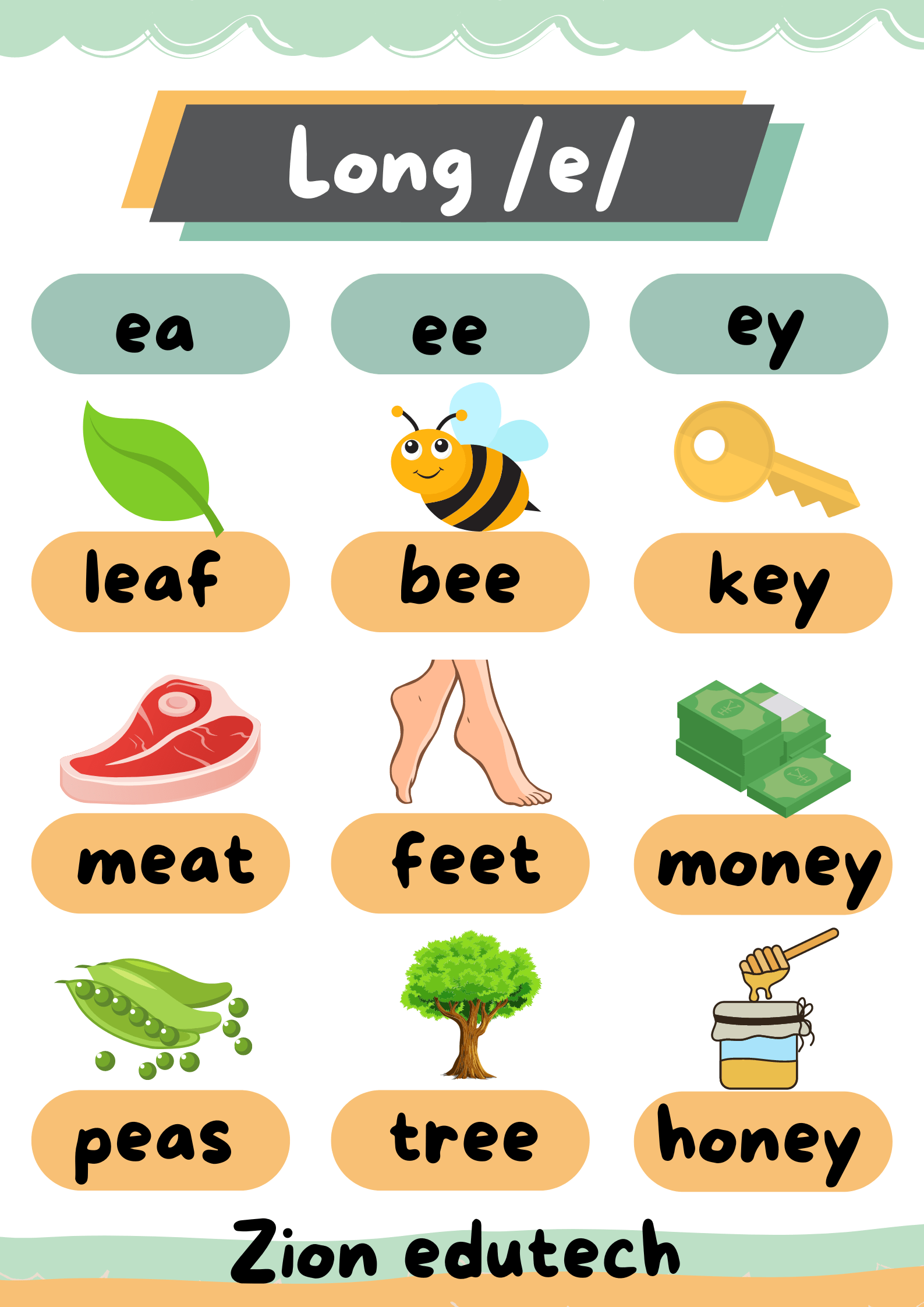Exploring the Magic of the Long and Short E: A Simple Guide for Young Learners
Long E and Short E: Learning Vowels
Ah, the letter “E”—a small but mighty vowel that plays a big role in our language! Depending on how it’s used, the letter “E” can sound like a quick, snappy “eh” or a long, drawn-out “ee.” Understanding the difference between the long and short “E” sounds is key to mastering reading and spelling. Let’s take a closer look at how these two sounds work their magic in the world of words!
The Short E: A Quick and Snappy Sound
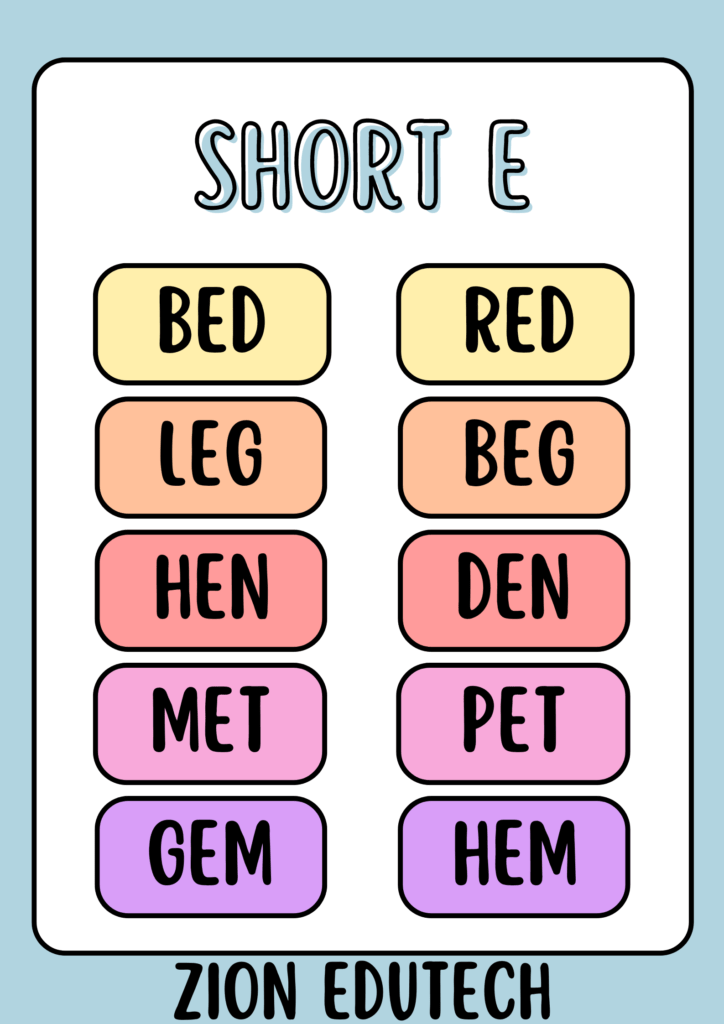
Short E Poster
The short “E” sound is like a quick tap on a drum. It’s brief and to the point, making the “eh” sound, as in the word “bed.” When you say it, your mouth stays relaxed, and the sound is over almost as soon as it begins. Here are some common examples of words with the short “E” sound:
- Bed
- Red
- Pen
- Net
- Leg
In each of these words, the “E” doesn’t take much time to say. It’s a simple, straightforward sound that you’ll often find in short, one-syllable words.
The Long E: The Showstopper Sound
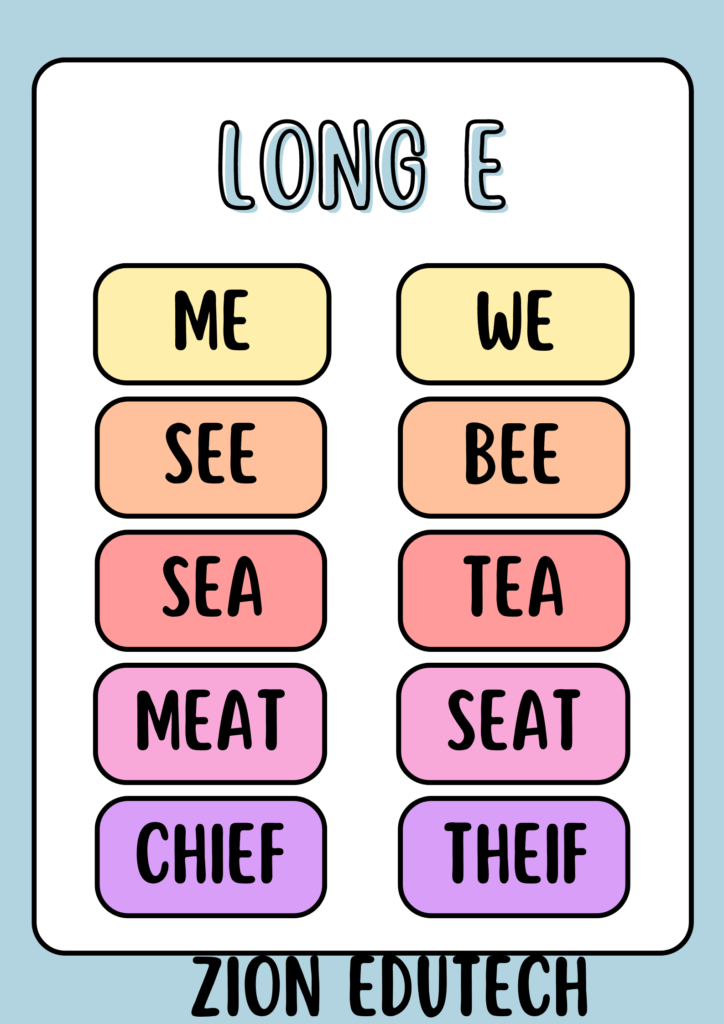
Long E Poster
Now, let’s talk about the long “E.” This sound is like holding a note in a song—it stretches out and really makes its presence known. The long “E” sound is pronounced “ee,” like in the word “tree.” Unlike the short “E,” the long “E” often sounds just like the letter “E” itself. Here are some examples:
- Tree
- Beet
- Meet
- See
- Eagle
Notice how the long “E” takes its time? It’s a clear, strong sound that often appears in words where the “E” is followed by another vowel or in words with an “E” at the end that’s helping another vowel say its name
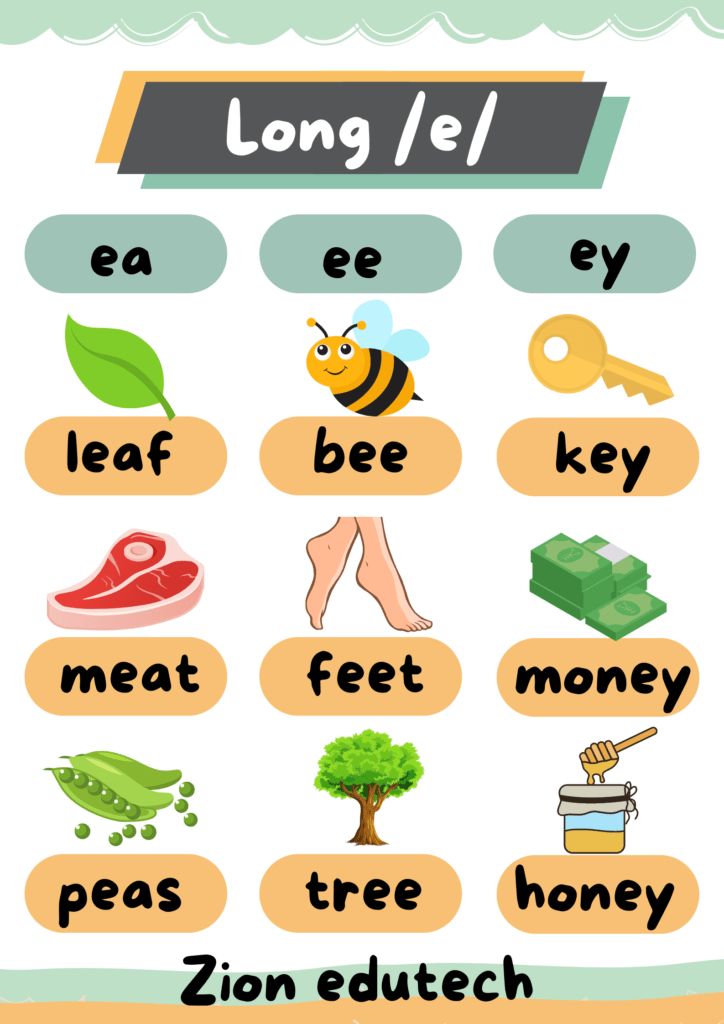
Long E Vowel Poster
How to Tell If It’s a Long E or Short E
Spotting whether an “E” is long or short comes down to a few simple rules:
- Short E in Closed Syllables: If the “E” is followed by one or more consonants within the same syllable (like in “bed” or “net”), it’s usually a short “E.”
- Long E in Vowel Teams: When “E” is paired with another vowel, like in “ee” (as in “see”) or “ea” (as in “bead”), it usually makes the long “E” sound.
- Long E with Silent E: If you see an “E” at the end of a word following a consonant (like in “beet”), the first “E” is usually long, and the final “E” is silent, just sitting there to make sure the first one says its name.
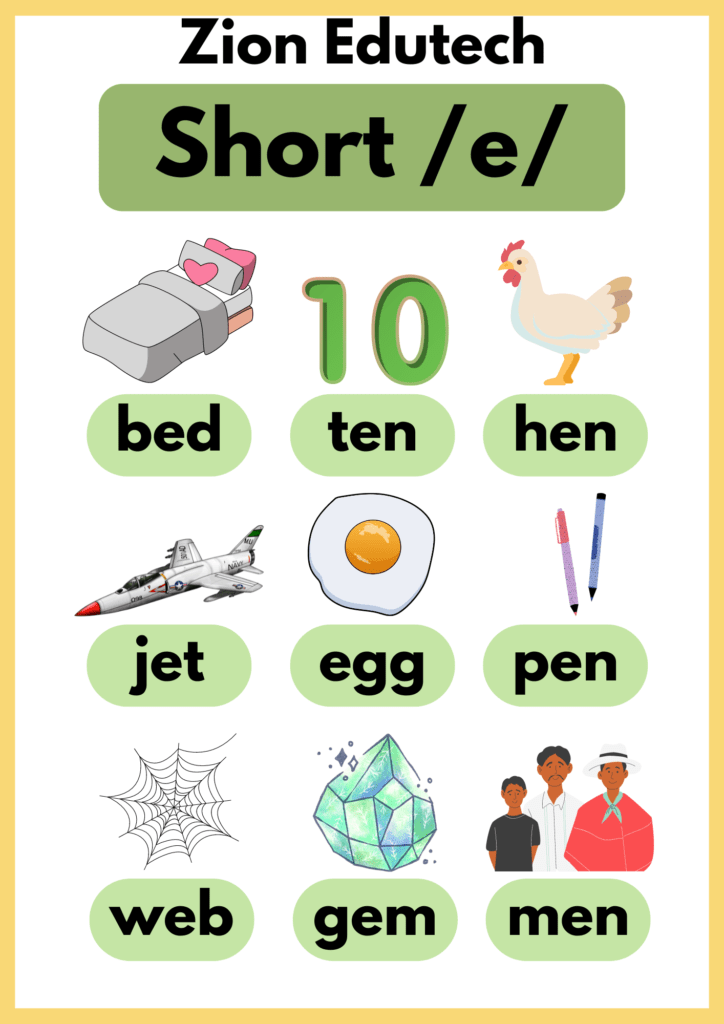
Short E Poster
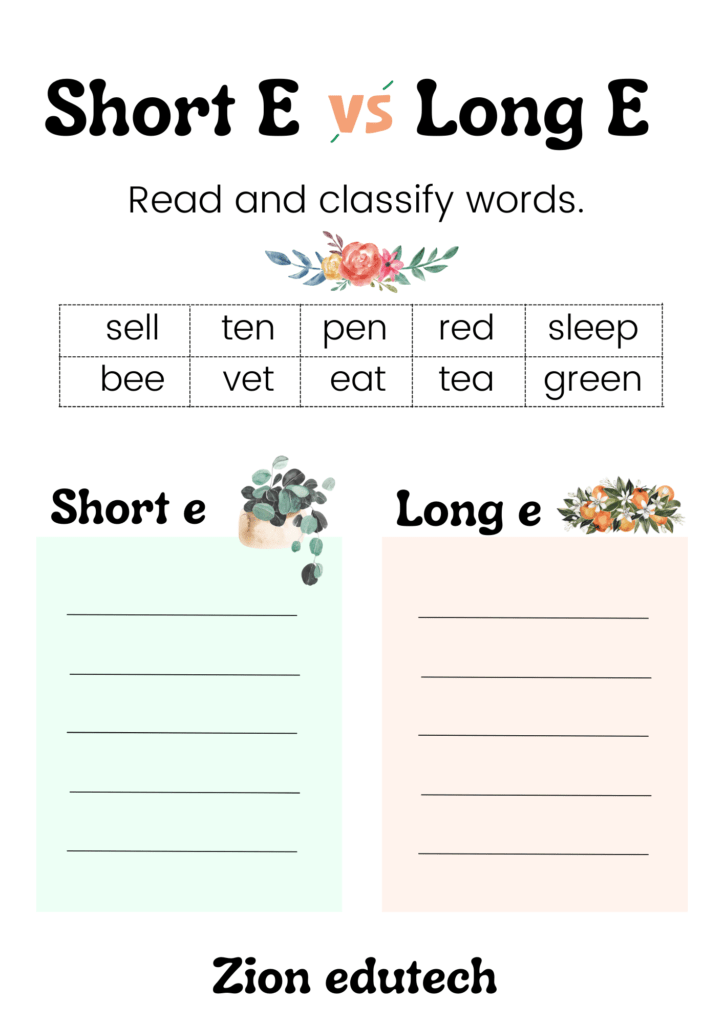
Long E and Short E
Why Understanding the E Sound Matters
Knowing the difference between long and short E sounds helps young learners decode words, improving their reading and spelling skills. It also makes learning to read more fun because kids can start to recognize patterns in words and understand why words sound the way they do.
Fun Ways to Practice Long and Short E Sounds
Learning doesn’t have to be boring! Try these playful activities to practice long and short E sounds:
- E Sound Sorting: Write down a mix of words with long and short E sounds on cards. Have your child sort them into two piles—long E and short E.
- Reading Aloud: Pick a favorite book and point out the long and short E sounds as you read together. You can even make a game of it—who can spot more E sounds?
- Rhyme Time: Create a list of rhyming words that focus on long or short E sounds, like “bed” and “red” or “tree” and “bee.”
Understanding long and short E sounds is an essential part of mastering English, especially for young learners just beginning their reading journey. By recognizing the difference between these two sounds, kids can unlock the secret code of language, making reading and spelling easier and more fun. So, next time you come across a word with an “E,” give it a second look—you might just discover the magic of the long and short E!
